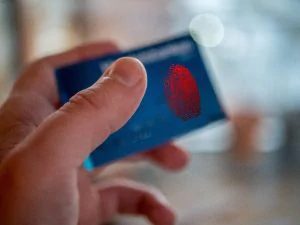Where is the payment card industry heading?
With more than three billion shipments per annum the payment card market continues to grow globally. Aside to this growth, it is also undergoing significant changes with a strong migration from EMV contact cards to EMV dual interface cards (especially in US, Latin America, Southeast Asia and India). Additionally, magnetic stripe cards are disappearing and only represent a small portion of the overall market today. Card usage is also expanding strongly with over 500 billion transactions in 2017 and consistent year on year growth of 10% since 2010.

The battle to capture the transaction
Considering these challenges and the reality that other form factors like mobile continue to grow in the market, it is legitimate to ask whether the payment card is still a vehicle for innovation, or whether it will be replaced by more convenient ways to pay?
When answering this question, one needs to understand that new form factors such as mobile payment are not necessarily cannibalizing, but complementary. Meaning as card and mobile payment become the dominant way to pay, the question is rather: Is there a future for cash?
The real battle is not between different form factors, where the transaction is authenticated with a secure element, the real battle is taking place with cash and other insecure ways to pay, such as QR code. For this reason, several governments have launched initiatives for their own national payment standard, for example RuPay in India, NSICCS in Indonesia or VCCS in Vietnam. The Indian government has the stated aim of demonetization. To reach this goal, it has already triggered the issuance of hundreds of millions of RuPay bank cards and introduced a mobile application to complement this. India has now reached over one billion cards in circulation, coming from under 400M pieces in 2014.
Bringing innovation to the payment card
Although new form factors have emerged, the payment card can still be an object for innovation. One key opportunity is bringing multiple use cases to a single card and making transaction authentication even more flexible, faster and more secure.
The convergence of applications is a key concept for the payment market of the future. This means that one card can serve several functions, such as payment, transit, identification or loyalty. The Santander University Card for payment, access and transit or the Bangkok Rabbit card for payment, transit and loyalty are already examples for cards that combine different functionalities. Emerging markets especially, such as South Asia-Pacific, India, China and Latin America have huge potential for convergence. With JCOP 4 P71, NXP is now bringing to market a product with both a new benchmark for transaction speed (under 200ms) as well as multi-application capability through MIFARE® DESFire® EV2 implementation. Through combining best-in-class performance and maximum flexibility, NXP now offers the fastest, highly flexible and future product in the market.
Another hot topic for transactions is biometric authentication, which allows for the replacement of PIN and simultaneously makes transactions even more secure. Biometric cards can be deployed both in mature EMV markets like Europe for convenience and security, as well as emerging markets like Middle East, Africa and APAC as a financial inclusion tool.
Fingerprint on cards – Security by design
As the potential of biometric authentication is recognized by the industry, fingerprint on card is moving from concept to the first pilots in the market. This is how it works: consumers authenticate transactions by placing their finger on a fingerprint sensor embedded in the card when paying at the point of sale. Safety is ensured as the consumer’s fingerprint is stored only in the secure chip within the card. The matching of the scanned fingerprint with the stored one is executed within the same secure chip. The bank or merchant never gets access to the consumer’s biometric data, which counters potential privacy concerns. For convenience reasons, consumers themselves can store their fingerprint in the secure chip on the card via an easy to use home enrollment kit, which only takes a few minutes. As an alternative this enrollment can be done at a terminal in the bank branch too.
The idea is simple: when using fingerprint authentication on the payment card, users can make secure point of sale payments without wasting time entering PINs or signing the receipt and without any changes in the existing EMV/POS contactless infrastructure.
Here NXP introduces SPM60; a biometric secure processing module enabling a “Wave & Go” transaction in under 1 second which adds convenience to the payment process and paves the way for a seamless customer payment experience. The matching of the fingerprint happens in the secure chip within the card, ensuring secure transactions. As a fully integrated one module solution, without the need of battery support, it allows an easy integration in a card body by using standard manufacturing processes.

As payment card fraud continues to grow steeply (by 18% year on year since 2011), the need to stay ahead of the fraudsters becomes both more difficult and important. The need to balance security with the simplicity desired by the consumer is a key challenge in addressing this. Biometric has the potential to not only improve the convenience and security at the point-of-sale, but also to add security in the card-not-present online space, for instance through dynamic CVV or tokens for online authentication.
Despite its growth and the changing landscape of the payment industry, consumer convenience and security remain at the heart of the transaction. If payment cards continue to innovate and provide a useful service, then they will stay as relevant as they have been for the last 50 years. The big advantage that cards have, is that so far there has been no other form factor which is as robust, lightweight, secure and convenient to replace them.







